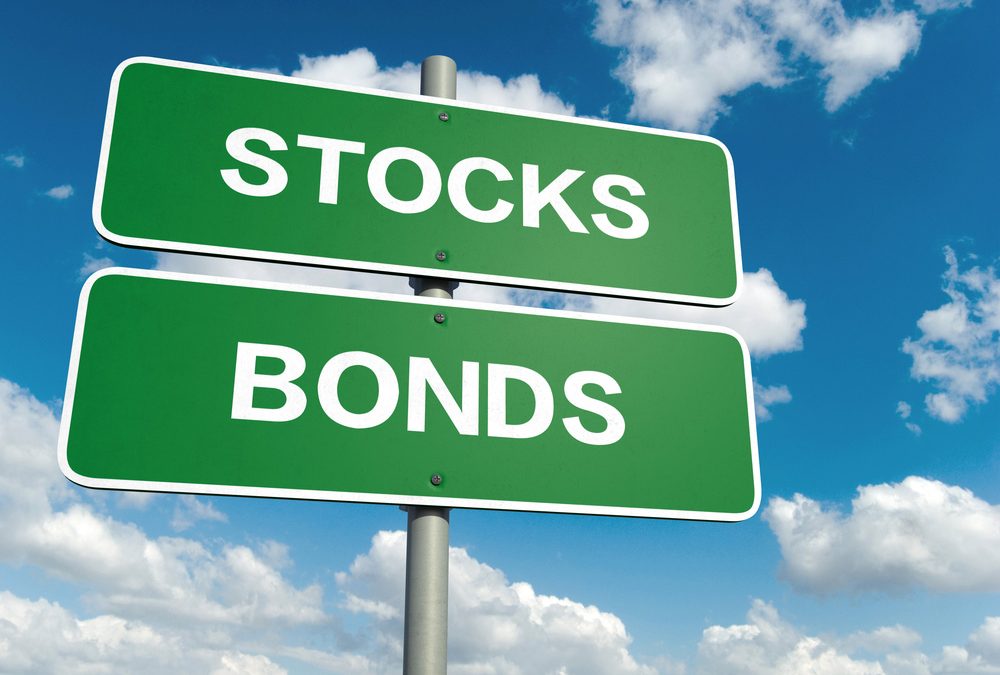The article “Can Dividend Stocks Replace Bonds?” was originally published on MoneySense on August 9, 2016.
It sounds good in theory, but it may not be the best strategy in practice
Q: I’m wondering if in this low-rate environment, a dividend equity ETF (an ETF in consumer staples that pays dividends) or other similar products can replace some of the bond portfolio in an asset allocation? It seems like bonds may provide slightly more stability but are providing negative or nearly negative returns after inflation.
—Kelly
A: Given how low interest rates are—and have been for some time—it’s no wonder people are considering stocks instead of bonds. This is certainly one result of low interest rates that are meant to encourage borrowing, spending and inflation. Inflation has remained stubbornly low in the Western world in recent years and consequently, so have interest rates.
Canadian bonds, as measured by the Scotia Capital Universe Bond Index, have returned about 8% annually over the past 30 years. With investment-grade bonds currently yielding under 2%, the long run does not look promising for bonds.
The thing is, Kelly, bonds aren’t generally meant to generate high returns. Bonds are in a portfolio primarily to reduce volatility. Stock markets dropped around 50% from peak to trough during the 2008-2009 financial crisis and a portfolio exclusively in stocks may have been cut in half in less than a year. Not everyone can stomach that kind of volatility and I witnessed firsthand clients who felt compelled to reduce their stock exposure or even go to cash at or near the market lows.
Bonds help to cushion the blow from stock market losses and reduce the risk of a knee-jerk reaction turning temporary losses into permanent ones. That said, especially with yields as low as they are, you give up some of the upside of long-run stock market returns when you hold bonds.
I think it’s important to start with your risk tolerance and determine how much stock market exposure you’re comfortable with in the first place. Online resources or a financial advisor can help, Kelly. I use a subscription service called FinaMetrica.
Beyond that, maybe you’re an investor who is comfortable with a large stock market exposure. I have clients who are invested 100% in stocks and are suited for it. The problem with your plan isn’t considering stocks instead of bonds. It’s a potentially flawed focus within your stock portfolio.
The media and the financial industry have promoted dividend stocks as a panacea for the past several years while interest rates have remained low. But if everyone is buying the same stocks, don’t they get overpriced eventually?
Plenty of data exists to support the large percentage of stock markets’ total returns that have come from dividends historically. But if you think about it, stock market indices by their very nature comprise the biggest companies on a stock exchange. And the biggest companies are the most mature and mature companies—well, they typically pay dividends. So of course a large part of the return from stock indices that track big mature companies comes from dividends.
There is actually quite a bit of research that shows that historically, the largest percentage returns have come from small cap stocks that typically pay lower or even no dividends. In fact, small cap stocks in the U.S. have returned about 30% more than the S&P 500 over the past 80 years, including reinvested dividends.
If you do opt for high dividend paying stocks, Kelly, you end up with a poorly diversified portfolio, especially in Canada. The FTSE Canada High Dividend Yield Index is currently comprised of 62% in financial stocks, for example. The broad-based TSX is bad enough at 36%. Compare this to the S&P 500, with only 16% in financials.
For perspective, an investor focused on financials would have earned about a 4% return over the past year in Canada. They would have ignored the materials sector and its paltry dividends and missed out on more than a 50% return (albeit from a low point in 2015).
You ask about consumer staples stocks. Consumer staples represent 4% of the TSX and 11% of the S&P 500. So again, tilting your portfolio to consumer staples might not result in a very diversified portfolio, Kelly.
When you’re managing your investments, start with the whole portfolio. Figure out what you want to hold overall between stocks and bonds. Then within your stocks, figure out what you want to hold in Canada versus the U.S. and internationally. If you’re going to bias your equities towards a particular sector, do it on purpose and strategically—not simply because you’re in search of dividends that may not be the be all and end all of investing after all.
Jason Heath is a fee-only, advice-only Certified Financial Planner (CFP) at Objective Financial Partners Inc. in Toronto, Ontario. He does not sell any financial products whatsoever.

